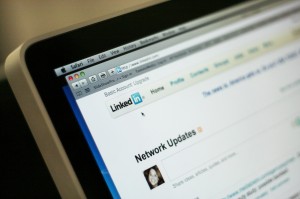
Professional networking has always been important aspect of looking for a job. In this digital age, more professional social networking sites such as LinkedIn, connect professionals all over the world.
LinkedIn is one of the fastest growing social networks on the Internet. Its Web site boasts that, “a new member joins LinkedIn approximately every second.” More than 60 million people are on LinkedIn from 200 countries and territories around the world.
Career Development Center specialist Lori Kraus explains that LinkedIn is “kind of like an online resume.”
“You can have references on there, recommendations, your past experiences and all this stuff,” she said, adding that LinkedIn is very user-friendly and the biggest network professionals look at.
With the state of the economy and tough job market, finding jobs has been difficult for students. Professional networking sites such as LinkedIn are useful resources for students looking for a job.
Career Development Specialist Patricia Conde-Brooks cautions that LinkedIn is useful in connecting to people, but “it’s not going to get you a job.”
“It is just one more avenue that you can use to find connections,” she said.
Students should be actively trying to meet with people in person, and these personal impressions and connections with people can be lost in the Internet, Conde-Brooks said.
Career Development Center specialists encourage students to use LinkedIn to research companies that they might be interested in or looking at the profile of a headhunter who might conduct interviews on campus.
Linking alumni and students
The Career Development Center has launched an alumni-student mentoring program on LinkedIn called Alumni Sharing Knowledge (ASK). The program aims to help students create an online presence that helps them get into the professional world.
“We’re mostly using it [to encourage] students to get networking and mentoring advice from alumni,” Conde-Brooks said.
ASK went on LinkedIn in February and already has more than 200 members, and “that number is growing daily,” Kraus said.
Anyone in the group can pose a question about career advice, and alumni can post their answers for students to read. Students may also schedule informational meetings with alumni in the program and ask for career advice in a face-to-face meeting.
Kraus said she thinks students should get a profile sooner than later. A profile can help students find internships and make connections that could last in the long run.
“A lot of freshman will come in and say, ‘Well, I don’t even know what to put on my profile,’” Kraus said. “Come in and talk with [career specialists]. We have a lot of different strategies to get you on [LinkedIn] and set you up.”
The Career Development Center does LinkedIn consultations and hosts workshops to give what Conde-Brooks called a profile “extreme makeover.”
A great resource for some, but not all
Junior Diane Kulseth joined LinkedIn more than a year ago. Her profile is very detailed, and she has 145 connections. Kulseth uses her profile regularly for the groups feature and connections. She said she enjoys looking at summary and recommendations sections on people’s profiles and likes the answers section feature, particularly.
“[It’s] really great to get information about the industry you wouldn’t typically get in a normal college course,” Kulseth said.
While Kulseth said she does not use LinkedIn to look for jobs, she actually got an internship through a LinkedIn connection. She met with an alumnus through the Career Development Center’s old alumni networking program and expressed interest in Internet marketing. The alumnus forwarded her name to someone else.
“After an informational interview and a few phone calls, that director […] was my supervisor,” Kulseth said. “To think it started with my curiosity about Internet marketing is really amazing, but that’s the power of LinkedIn.”
But senior Georgia McClellon has had no such luck on LinkedIn. She created her profile eight months ago after someone told her about how the network could help with her career. She has not been contacted by any professionals, and she says her profile is not updated.
“I haven’t had any incentive in using it,” McClellon said. “I have not logged into my account for months.”
McClellon said she might give LinkedIn another shot sometime.
Theresa Malloy can be reached at mall5754@stthomas.edu.

The Career Development Center would like to address the concerns listed in the article about using LinkedIn, and would like to offer some tips to assist in networking efforts:
1. Add descriptions to positions: You may hold some very impressive positions that the title doesn’t do justice for. Inform employers of what you do by adding descriptions to your job titles. List what skills you gained or how your experiences shaped you. By doing this, you truly open the door to organizations to get a better idea of who you are and what capabilities you can bring to a company.
2. Create an objective for your job search: A simple statement of what type of career you is looking for and what experience you have to be qualified for such a position would be sufficient. This takes the guesswork out for employers who are looking for candidates.
3. Reach out: We believe that if you truly wish to find success using LinkedIn; that you should try reaching out to the employers first before they contact you. This shows true interest in the company. It’s in your best interests to expand your network and research who you can contact within the company to get your foot in the door.
We recommend that if student s finds that they are having difficulty using LinkedIn, that they call our office…